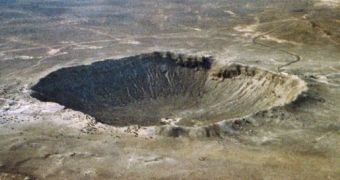Over the years, as scientists browsed satellite data or took to the field, numerous comet and asteroid impact sites have been discovered on the surface of our small planet. But experts believe that many more may still be out there, unknown to Science. Finding them is very important, because they could provide a window into the Earth's history, and they may also provide explanations about what happened during extinction events or evolutionary bottlenecks. As such, investigators at the University of Kansas, in the United States, have recently developed a new method of looking for these ancient impact sites.
“Comet impacts might be much more frequent than we expect. There's a lot of interest in the rate of impact events upon the Earth. We really don't know the rate very well because most craters end up being destroyed by erosion or the comets go into the ocean and we don't know that they're there. We really don't have a good handle on the rate of impacts on the Earth,” KU Professor of Physics and Astronomy Adrian Melott says. He has been the leader of the team that has found the new method of gauging the frequency of comet strikes over the ages.
The KU group will present its finding between December 14-18 in San Francisco, at the American Geophysical Union's Fall Meeting. The researchers say that they have found a new marker that could potentially be used to determine when comets struck. Until now, geologists have been aware that traces of nitrates in ice deposits are a clear indicator of past collisions, but they have never thought that ammonia could serve the same purpose. “Now we have a possible new marker for extraterrestrial events in ice. You don't just look for nitrates, you also look for ammonia,” Melott says.
“A comet entering the atmosphere makes a big shock wave with high pressure – 6,000 times the pressure of air. It can be shown that under those conditions you can make ammonia. Plus the Tunguska comet, or some fragments of it, landed in a swamp. And any Younger Dryas comet presumably hit an ice sheet, or at least part of it did. So there should have been lots of water around for this Haber process to work. We think the simplest way to explain the signal in both objects is the Haber process. Comets hit the atmosphere in the presence of a lot of water and you get both nitrate and ammonia, which is what both ice cores show,” he concludes.

 14 DAY TRIAL //
14 DAY TRIAL //